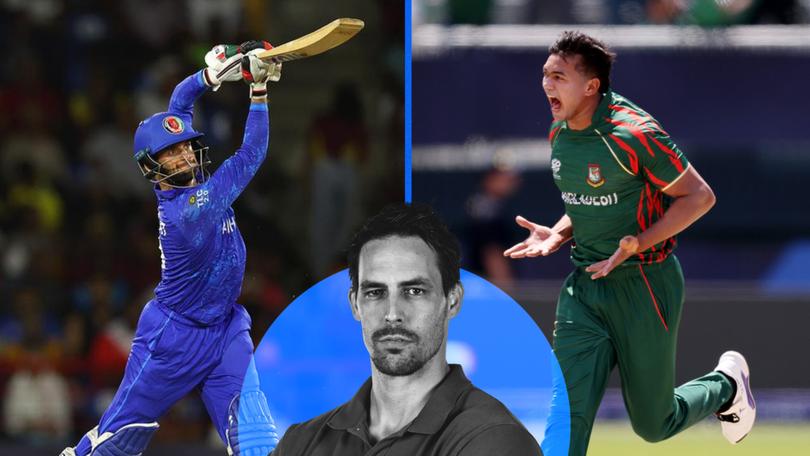MITCHELL JOHNSON: Bangladesh and Afghanistan now longer cricket minnows with strong T20 World Cup

Playing against Afghanistan and Bangladesh during my career, the emerging cricket nations were regarded as minnows.
But while they didn’t generally have an XI with the skill or the experience needed to take it up to a cricketing powerhouse like Australia, you could see that these teams were made up of players who really loved the game.
They were doing everything possible to get better and took every opportunity to learn all they could from the Australian players when they came up against us.
Sign up to The Nightly's newsletters.
Get the first look at the digital newspaper, curated daily stories and breaking headlines delivered to your inbox.
By continuing you agree to our Terms and Privacy Policy.They would watch what we were doing in the warm-up, watch what we and other fully-fledged opponents would do during matches and then talk to opposition players after games – all part of gaining knowledge about what they needed to do to get better.
Australia will now meet Bangladesh and Afghanistan during the Super-8s stage of the T20 World Cup on an equal footing.
They are no longer easy beats. They are now highly competitive and have a very real chance of qualifying for the semifinals.
Afghanistan are yet to beat Australia, having met them in only four one-day internationals and one Twenty20 game, but they defeated England, Pakistan and Sri Lanka at last year’s 50-over World Cup. It took one of the greatest innings of all time from Glenn Maxwell for Australia to avoid joining that list of victims – having been 7-91 chasing 292 for victory.
In nine World Cup matches (T20 and ODI) Bangladesh have never beaten Australia, though the Tigers have tasted success outside the major tournaments - winning one Test match, one one-dayer and four T20s against the Aussies.
It can be a long process for the associate nations to be able to match it with the best, but cricket fans should see that the continued globalisation of cricket this century will only make the game better in the long run.
The first 20-team World Cup has been a success already, with co-hosts the United States qualifying for the Super-8s at their first attempt.
The group stage was exciting with the USA taking down Pakistan in a super over in the biggest upset so far, while Afghanistan thrashed New Zealand. South Africa only scrambled past Nepal on the final ball and the Aussies had to fight hard to chase down Scotland’s score with only two balls remaining.
Some games have been very one-sided. Australia took just 5.4 overs to blast past Namibia’s total of 72, New Zealand needed only 5.2 overs to chase down Uganda’s total of 40 and England just 3.1 overs to pass Oman’s 47.
But the minnows deserve to be there and I’ve enjoyed seeing these lesser-known teams give their all. They qualified through the various paths and play-off tournaments set out for them and earned their spots.
The associate nations are gradually improving by playing against each other, but they do not get a fair crack at playing sides such as England and Australia outside of the big tournaments.
It’s sink or swim at the World Cup because the minnows really are thrown into the deep end. They simply don’t get any regular cricket against the top tier, so it’s a huge ask to then be able to compete at that level at a major event like this.
The USA showed they could swim but if cricket wants to reap the benefits of genuinely growing the game and attracting a wider audience, the sport must get serious about proper scheduling and giving the second-tier teams more opportunities to play big games outside of World Cups.
